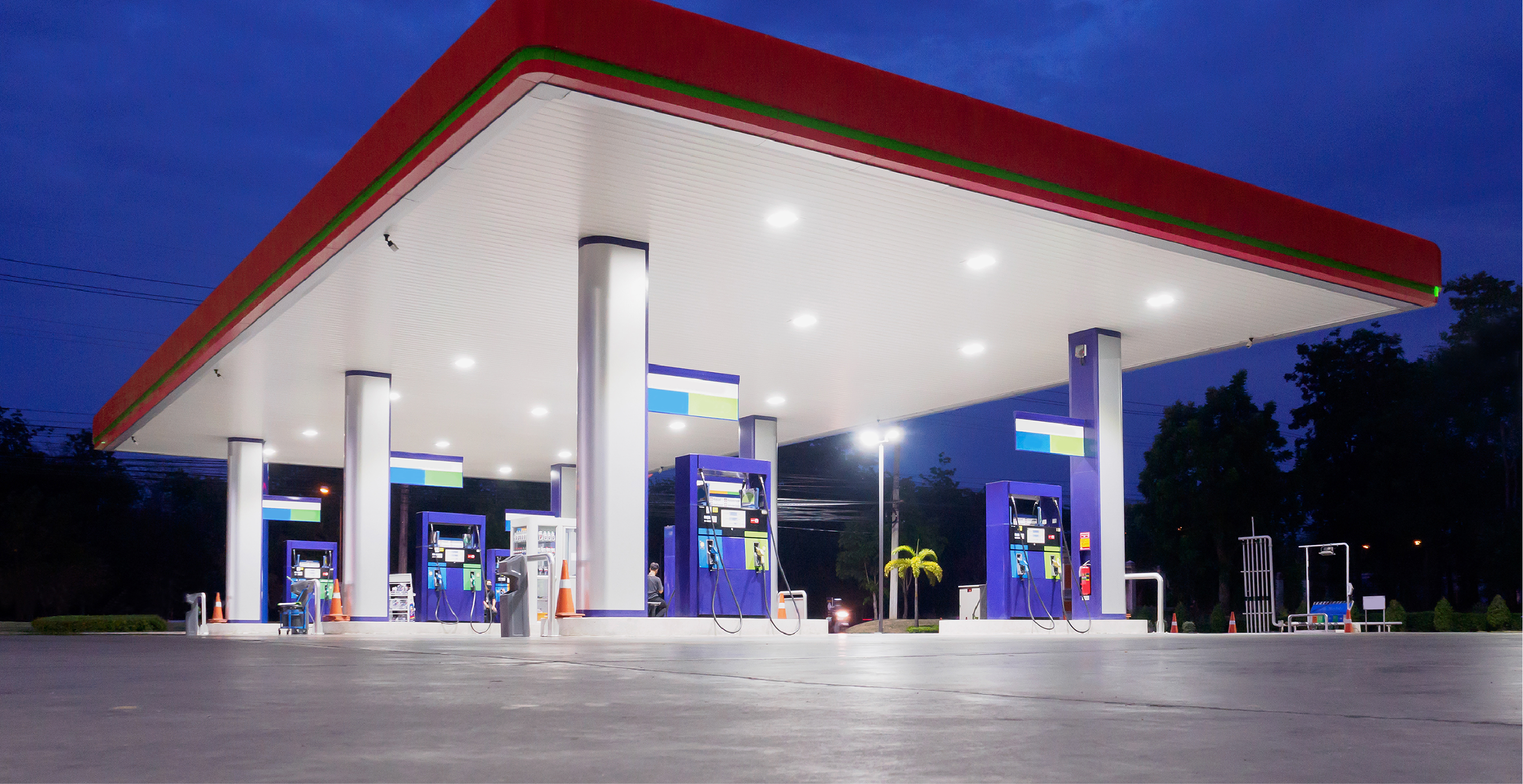Download Case Study
National Convenience Store
The client, a prominent national convenience store chain, initially transitioned from Metal Halide to LED lighting between 2014 and 2017. Each site included 20+ LED canopy lights and 8-12 area lights to brighten their facilities. While the first-generation LEDs represented an innovative step forward, several issues began to arise as the
technology approached a decade of use.
The Problem: Underperforming Fixtures
First-generation LED fixtures can begin exhibiting a series of failures that negatively impact safety, maintenance processes and operational
expenses:
- Outages – Frequent driver failures result in lights not functioning at all.
- Flashing – LED board component malfunctions cause lights to flicker erratically.
- Severe Color Shifts – A purple hue begins toappear due to premature degradation of the phosphor layer on the LED chips.
- Dimming – Natural lumen depreciation reduces light output over time.
Because of these failures, the convenience store started incurring high maintenance costs with trips averaging over $1,000 per light.
Maintenance requests also varied between store managers, with some reporting all outages immediately and others accumulating multiple
failures before filing service requests.
The Solution: A Turnkey LED-to-LED Upgrade
EMC recommended a comprehensive turnkey plan to replace the aging first-generation LED fixtures with modern, energy-efficient LEDs, a solution also known as reLED. The strategy focused on eliminating maintenance inefficiencies, reducing operational costs and maximizing energy savings. The client needed to complete the project on an expedited timeline over a busy holiday period. At the peak of the
project, EMC converted 20 sites in just over one week.
The Results: Lower Maintenance Costs and Annual Energy Savings
New fixtures increased light levels by 240%, eliminating the dimming, outages and colorshifting issues that previously plagued store locations. Upgraded fixtures meant renewed warranties, eliminating $2,000 to $3,000 in annual maintenance costs per site. Corporate
managers can now refocus their efforts on strategic tasks instead of constant repair oversight while putting valuable money back into their budgets.
In addition to lower maintenance costs, sites now capture $1,500 to $2,500 in annual energy savings.
